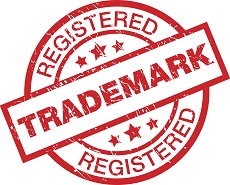
WHAT IS A TRADEMARK?
On the most fundamental level, a trademark is a source identifier. It may be a word, logo, slogan, sound and or design and when attached to a good or service, immediately communicates to a consumer the company/individual, which sells the good/service. As an immediately relatable example, consider the phrase, “I’M LOVIN IT”. Merely seeing this Trademarked slogan on a brown paper bag allows a consumer to understand that the bag (and the food contained within it) is a product of the McDonald’s company.
THERE’S MORE THAN ONE TYPE OF TRADEMARK
Trademarks may be registered in the United States Patent and Trademark Office (USPTO), which would render it a Federal Trademark, or in the Trademark Registry of a particular State. Which route is the better option? Is it up to the applicant to decide which type of trademark who/she would like? Let’s dive into some of the fundamentals to learn more.
FEDRAL TRADEMARKS
On a strictly superficial level, a federally protected trademark is legally permitted to use the ® symbol after its mark, while a State trademark uses the ™ symbol. However, the differences between the protections afforded by a federal vs. State trademark are more than symbolic in nature. Critically, in order for a trademark to obtain federal protection, it must be “Used” in “InterState Commerce.”
“Use”, according to the USPTO is “Bona-fide” use, or real and meaningful use of the mark. Simply, an applicant must have sold a substantial and significant number of the goods/services under the trademark for the Use requirement to be met. There is no exact number of sales/money earned which will by definition satisfy the requirement however a token sale of one popsicle to a friend would not count while the sale of 1,000 popsicles to multiple parties most likely would.
“Commerce”, as defined by the Lanham Act, refers to trade that the federal government is authorized to regulate (Interstate Commerce). In practice, this means that an application for federal trademark protection must apply to goods or services, which are sold or advertised outside of the State in which they originate, before qualifying for trademark protection. For example, if you live in New York, the mark must be used in connection to goods/services sold to individuals in other States. Or, in a more comprehensive formulation, Commerce must be intraState (between States); territorial (between US and Guam, Puerto Rico, American Samoa or the U.S. Virgin Islands), or; between the US and a foreign country. Simple intraState commerce does not provide a basis for federal protection of a trademark unless it is a form of commerce Congress can regulate.
Consider, as a powerful example, hotels. A hotel falls under the domain of interState commerce because its customers often cross State lines to use the services of the given hotel. Furthermore, hotels advertise in more than one State. The idea here is that Federal trademarks apply to those circumstances whereby commerce is being conducted across State lines in ways that implicate consumers in a national capacity.
STATE TRADEMARKS SHARE ONLY CERTAIN COMMONALITIES WITH FEDERAL MARKS
When filing for State trademark protection, the rules are slightly different. Let’s examine the New York State trademark application process and observe some of its differences with the Federal Trademark Application process.
New York State’s, Office of the Secretary of State, processes trademark applications for State trademark protection. Like a Federal trademark, a NY State trademark application must include: the applicant’s name and business address, the State of corporate formation (if applicable), a description of the mark (including any design features) and its associated goods or services, the international class, the manner in which the mark is used, and the date the proposed trademark was first used either by the applicant or by a predecessor in interest. New York also requires the applicant to include a Statement that the applicant is the owner of the trademark, the trademark is in use, and that the applicant believes no other person or entity has registered the mark.
However, unlike a Federal trademark, if an identical trademark is already in use by another entity, the trademark applicant is afforded the opportunity to explain how associating the same trademark with these goods or services will not cause confusion or deceive consumers. The trademark applicant must submit three examples or specimens demonstrating how the trademark is being used in commerce. The New York State trademark application fee of $50.00 must accompany the application and an additional $50 fee is required for each classification of goods or services. Conversely, a Federal trademark issued by the USPTO is typically $225.00 or $275.00 per class of goods/services.
While the USPTO processes its trademark applications electronically, New York State does not. The New York State trademark application must be completed by hand, with a notarized Statement, and then mailed to the New York Office of the Secretary of State.
Finally, in the event that the Federal or State trademark is rejected, each respective Office provides a process whereby an applicant can rebut or amend the application and have it reexamined. If the applicant fails to satisfactorily rebut the rejection, the application will go abandoned.
TRADEMARK TAKEAWAYS
Remember, the essential purpose of a trademark is to alert a consumer to the source of the good/service to which the trademark is attached. To obtain a federal trademark, which provides protection across the entire United States, an applicant must have a sufficiently distinct trademark vis-à-vis his/her designated goods/services AND use it in interstate commerce.
Abe Cohn is an attorney at Cohn Legal, PLLC, a law firm designed specifically to provide a boutique experience for entrepreneurs. Abe’s area of expertise is intellectual property and startup law. Please visit him at http://www.cohnlg.com






